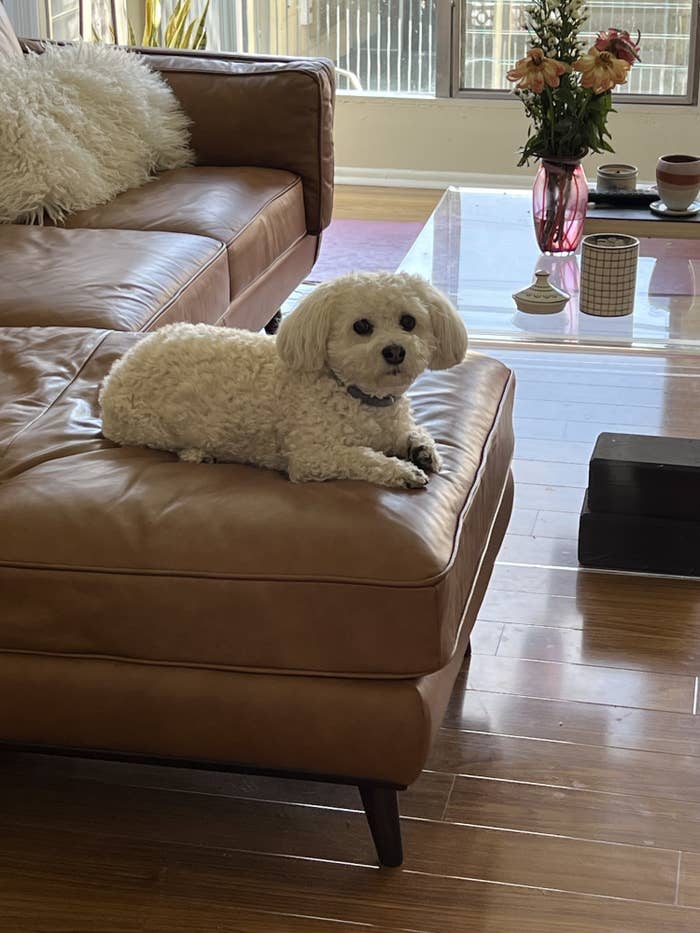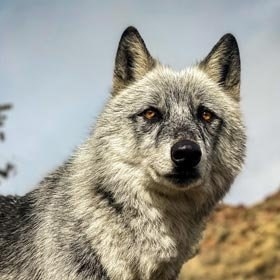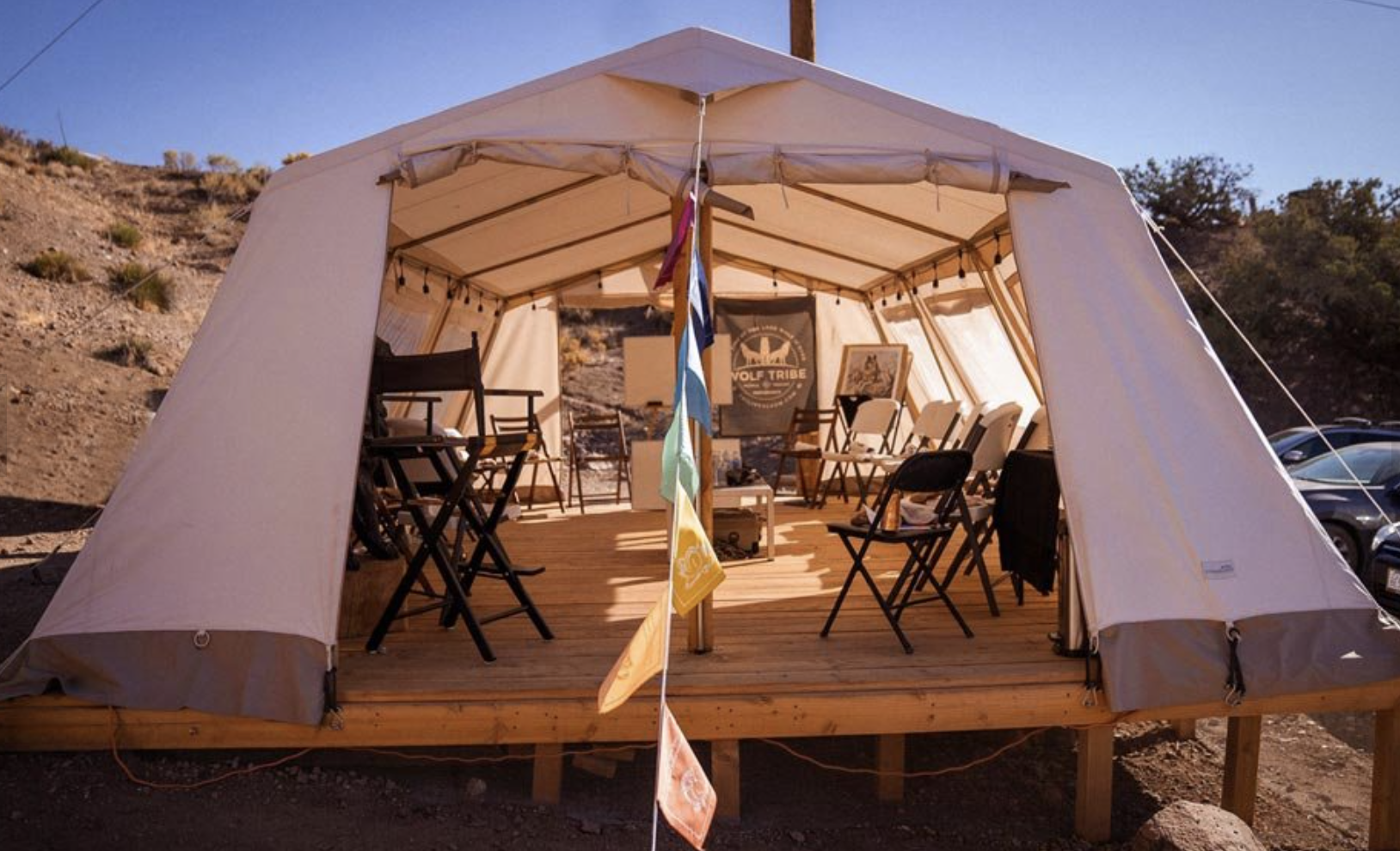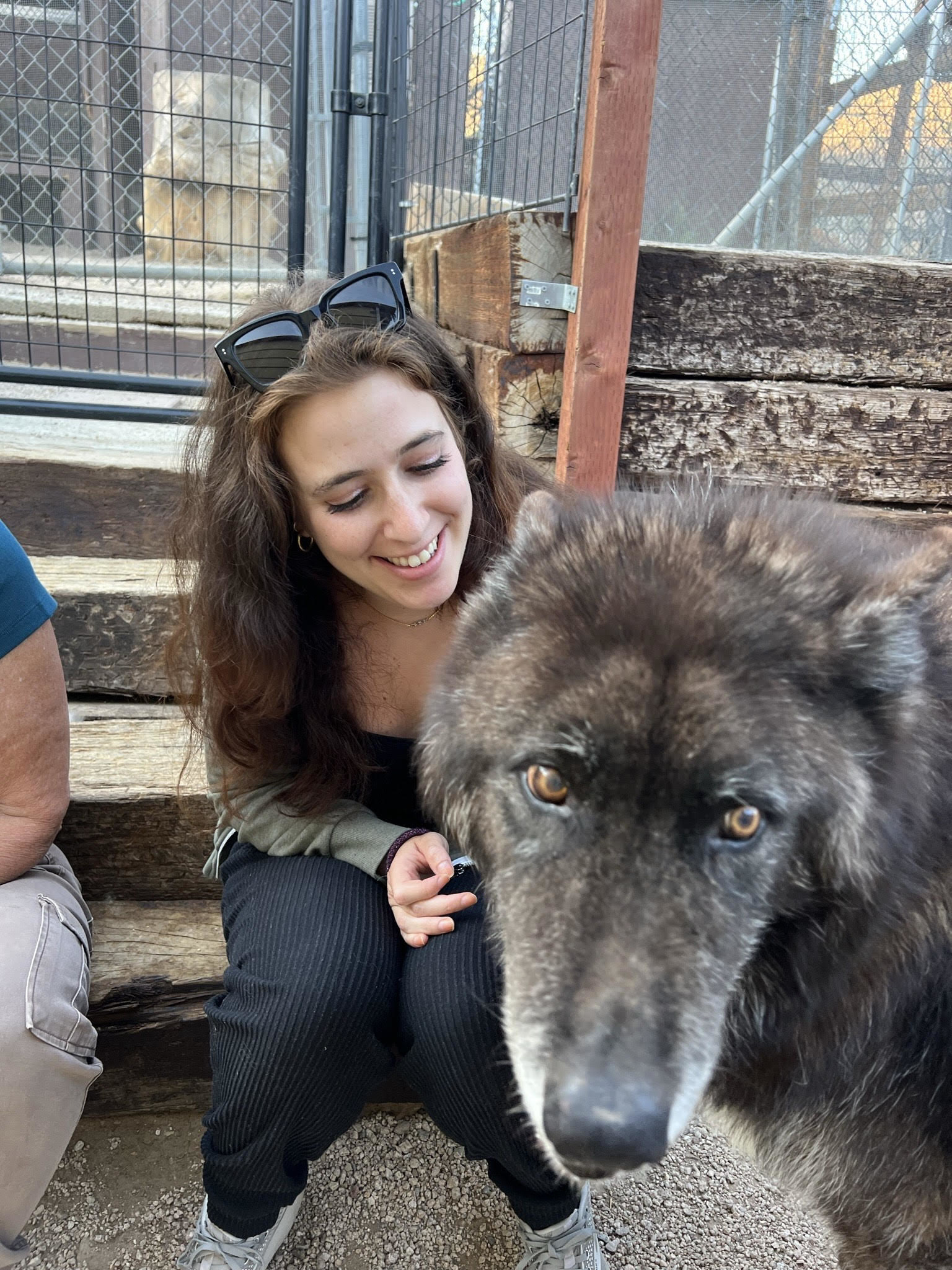My wolf pack consists of me and Louie, my 17-pound Havanese, who screams in fear if he gets too close to a cat and is utterly terrified of balloons. Yes, this guy shares 98.8% of the same DNA as a wolf:

Here he is quivering in a corner because a fruit fly got into my apartment:

Paula Ficara and Steve Wastell — the cofounders and directors of the Apex Protection Project — have me beat. They have 16 wolf dogs and one full wolf in their pack, and they all live together about an hour outside of Los Angeles (they keep the exact location a secret for security reasons).

In case you're as shocked as I was when I learned that there are people out there who OWN wolves, let's rewind for a second to explain how Steve and Paula got here. A little over 13 years ago — in 2009 — the couple started volunteering at a small wolf dog rescue, where they learned about the plight of wolves and wolf dogs that are bred as exotic pets, as well as the mistreatment of wolves in the wild. From there, their love and passion for the species was born. In 2015, they founded Apex, a nonprofit organization dedicated to saving wolves through education, rescue, and advocacy. Here is everything they shared with me (including an incredible encounter with their beautiful wolf pack):
1. I needed more info on these "wolf dogs," and why they even exist in the first place. Steve said, "Wolf dogs were kind of bred for many reasons over the last hundred years or so ... Sometimes they were bred because they wanted to see if they could breed some of the defects out of dogs, and others wanted to breed them because they thought they’d be great guard dogs, which they’re not, because wolves are afraid of everything. And now they’re pretty much bred because full wolves are illegal to own as a pet in most states and most counties without an official wildlife license."

2. The big problem with legally being able to own one of these guys is that most people are not equipped to care for them. Paula said that a lot of the wolf dogs they've rescued were from people who simply didn't realize how big a responsibility caring for one would be. "It’s usually people who have bought them thinking that it would be romantic to own a wolf, and then when the wolf grows up to be about a year old and it’s full grown, and they start experiencing all the challenges that are equal to a 3-year-old human toddler with really large teeth, they realize that they’re in over their head."

3. Unfortunately, some of these wolf dogs — and illegally owned wolves — end up being horribly abused by their owners or sent to a kill shelter. One of Steve and Paula's wolf dogs, Riggs, was rescued from a facility where he was mere days from being put to sleep.


Thanks to Steve and Paula, he's now thriving in their sanctuary, along with their 16 other permanent wolf and wolf dog residents that they care for. Here he is in all his glory:

They were nice enough to invite me (and my mom — happy Mother's Day to Leslie!!!) to their property for the "Alpha Experience," where they shared stories and facts about wolves and wolf dogs, introduced us to the pack, led us on a stunning sunset hike, and cooked us a delicious meal.

4. One fact that shocked me was how long they can live. Steve said the life span of a wild wolf is five to eight years, but in captivity, they can live way longer. Paula and Steve knew one that lived until he was 24, and they had two that lived to 21.

5. I was also surprised by the average size of wolves. For some reason, I thought they were around 200 pounds. But Steve said the average male weighs between 90 and 125 pounds, and females are usually 80 to 100. This is James, who's still a pup but weighs about 90 pounds right now:

And this is Sarge, the biggest in the pack. He's a kind, chonky king, weighing in at 112 pounds:

Well, he did do a little snap in my face, but that's because I got too cozy after he gave me some incredible kisses.

6. Which leads me to what is probably your next question: How the hell is everyone getting so close and cozy to these wild animals?! Well, they're not wild — they're in captivity. And they've been trained VERY well by Paula and Steve. But that doesn't mean you can just prance on into their enclosure. They're skittish and not great with strangers, so you have to move very slowly and quietly, then immediately sit down on the floor when you're finally near them. They don't like to feel as if they're being dominated. Being eye level with them is key.

7. On a similar note, pet them from underneath when you first encounter them, not on top. And don't pat them — that'll freak them out!

8. Some, like Riggs, are more social than others. He just loved giving kisses, and I will cherish them for the rest of my life.

9. Once they're comfortable, you can definitely give them some good scratches! Look at Riggs smiling and leaning into me — I can't handle the cuteness 😭.

10. By the way, their brains are 30% bigger than dogs' brains.

11. The care for these pups is expensive. "Our meat bill every month is $1,600, and that’s just their meat," Steve said. "It doesn’t include the supplements or anything in it. So it costs us about $20 a day to feed most of them. Our vet bills are close to $40,000–$50,000 a year. It’s very expensive. Our guys get the best care." They also get a ton of exercise, and we got to be a part of that exercise when we took three of them on our sunset hike! At one point, they were let off leash to roam the top of the hill, and it was freaking majestic.

12. One of the coolest things I learned about the wolf dogs is that — just like humans — they choose a partner they want to cohabitate with. There are multiple "couples" at the sanctuary that live together in enclosures. "You can really tell if one of them is being flirtatious and playful," Paula said. "They make it extremely clear that they want to be together." But apparently, in the wild, many wolves will choose not to start a family because of the stress it causes. Wolves with families in the wild tend to live shorter lives, Steve said. One of the couples at the sanctuary is James and Vesper, who prefer to go by "Jesper," according to Paula.

We ended our unforgettable adventure with some delicious burgers — grilled up by the friendly and hilarious staff — and a chat around the fireplace.

My mom remembered how, when we first got into the enclosure, a wolf named Thor immediately went up to her and welcomed her with gentle kisses. Thor was her guess, and she was correct!

Before we left to head back to Los Angeles, Steve started a howl, and all the wolves on the property joined in unison. It was probably one of the most magical things I've ever experienced. Here's a shot to leave you with — the pack dogpiling each other:

I'm so grateful I got the chance to learn about, kiss, and play with these beautiful creatures. If you want to meet the pack or learn more about the organization, visit apexprotectionproject.org. And for more wolf content, definitely check out the organization's TikTok and Instagram!
Comments
